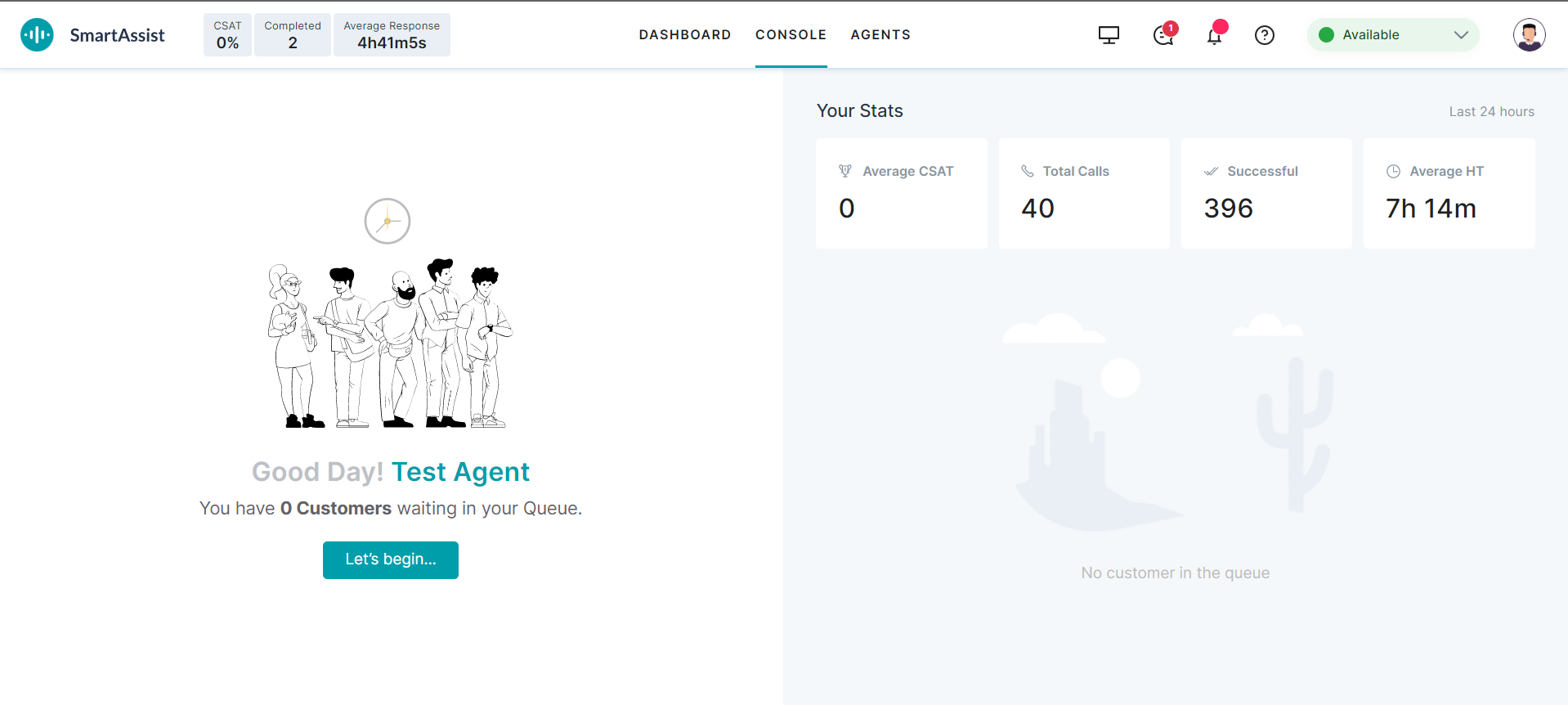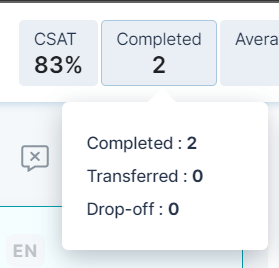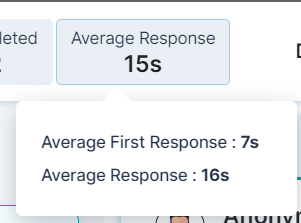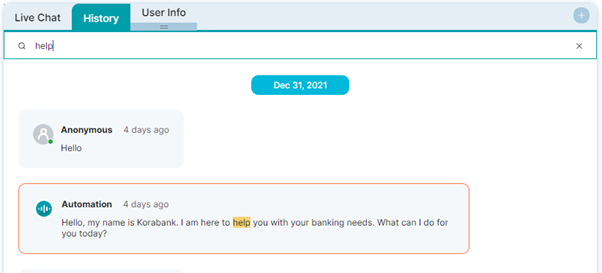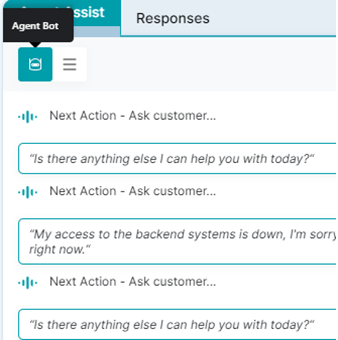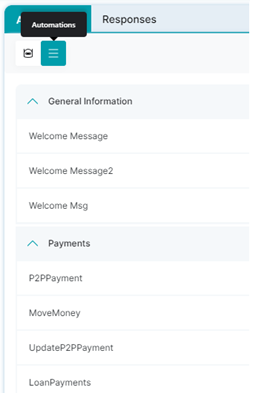Conversation Tray
The conversation tray shows all the conversations currently being handled by the agent and can be used by the agent to keep a track of their existing workload.
Conversation Status
Let’s start by looking at how conversations are divided by status. This section appears in the left panel of the Console section and displays the counts for conversational metrics.

Conversations can be in any of the following 4 statuses:
- Expired Conversations: These are conversations where the agent’s response SLA has not been met. These are also commonly known as overdue conversations.
- Active Conversations: These are conversations where the last sent or received message was less than 5 minutes ago.
- Idle Conversations: Conversations where the last sent or received message was more than 5 minutes ago.
- Expired Conversations :Conversations where it has been detected that the user has left the conversation and it has been over 5 minutes. These conversations are also known as dropped-off conversations.
Conversation Information
This section displays the data about a conversation that is being handled by an agent.
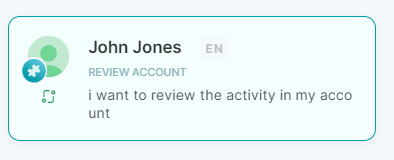
An entry in this tray typically includes the following information:
- Customer Name (if available)
- Language of interaction
- Skills that have been identified based on the intent of the customer
- The last exchange in the conversation
- Customer profile picture
- Interaction channel icon.
- Conversation status icon and duration.
Queue Status
This section displays the number of customers currently waiting in the queue and the “Next Customer” button. Agents can click on the “Next Customer” button to receive the next conversation that has been queued up for them. When the agent clicks this button, the conversation panel for the next customer is displayed.

Conversation Area
The conversation area is where the agent can actually interact with a customer. In this area, agents can respond to customers, get access to any external information as well as perform their regular conversational functions like managing conversation status, transferring it to another agent, accessing Agent Assist etc.
The Conversation Area is split up into widgets. Widgets are individual windows that serve a specific purpose. Since the agent’s conversation area is completely flexible, agents can move individual widgets around.
Agents can also combine different widgets to view them as widget groups. An External Widget on SmartAssist allows the user to integrate utility or other external applications (calendar, search, etc.) relating to a specific functionality on the agent console. To know more about Agent Widgets, see External Widgets.
SmartAssist Console comes loaded with the following widgets:
Live Chat
The Live Chat window displays a quick summary on the current agent interaction with the following information:
- Customer Name: The name of the customer interacting with the agent.
- Agent Notes on the interaction (customer feedback, key points, next action, suggestions given, and more). This includes any previous notes added by agents while interacting with the same customer. Agents can view and add new notes by clicking on the notes icon.
- Transfer: Click to view the Transfer window where you can add the following information:
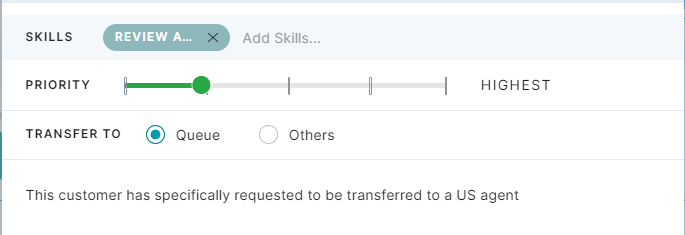
- Skills: Select a skill or multiple skills from the list displayed. This skill will be appended to the existing skill combination of the conversation and will be used in finding a suitable agent.
- Conversation Priority: Lets the transferring agent mark the priority of the conversation being transferred to keep the recipient informed.
- When a conversation is transferred, the routing logic changes the scoring for routing logic based on the following rules:
- Score is increased by 0% if agent transfers user into queue/agent with very low priority
- Score is increased by 10% if agent transfers user into queue/agent with low priority
- Score is increased by 25% if agent transfers user into queue/agent with medium priority
- Score is increased by 40% if agent transfers user into queue/agent with high priority
- Score is increased by 50% if agent transfers user into queue/ a agent with max priority
- Transfer destination (queue and others): Lets the transferring agent select if the conversation should be transferred to a queue or another agent/agent group.
- Transfer notes input section for the receiving agent to view when the transfer happens.
- End button: Click the button to end the live chat. This displays the following end chat section window.

To set the disposition and close the conversation, follow these steps:
-
- Select a status from the following options for disposition.
- Resolved: Select when the customer query is resolved.
- Requires follow up: Select if the customer query is not resolved or partially resolved by the agent and needs a follow-up.
- Requires Supervisor Attention: Select if the customer query requires the agent supervisor’s attention.
- Type a detailed description of your remark for selecting the disposition. Click Close Later if you want to close the conversation later, else, click Close Now.
In addition to this, agents also have access to the following in the Live Chat window:
- Language: Select the language you prefer for the live conversation. This can be used by agents to specify the language of a conversation, especially when the auto-detected language in the conversation may not be accurate.
- Skills: Agents can add/remove the skills that have been auto-detected in a conversation. This can be used to better route the conversation to another agent as a part of the transfer as well.
- Customer quick summary: This section displays the summary of the live chat conversation with the following details:
- Agent Name: The agent who handled the live chat.
- Wait Time: Displays the wait time for this chat for a given agent.
- Sentiment: The customer sentiment captured by SmartAssist based on the customer responses.
- Key intent & Utterance: Shows the key intent provided by the customer when they initiate the live chat.
- Contact Flow icon: Click this icon to view the graphical representation of conversation flow.


